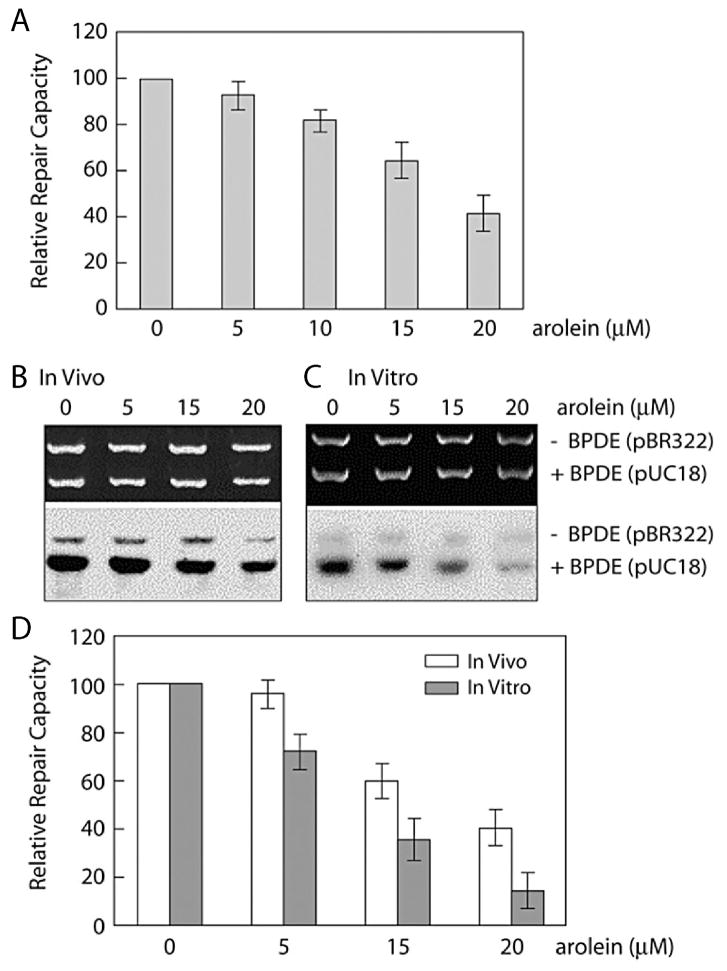Figure 7.
Inhibitory effect on DNA repair capacity by Acr. (A) Host cell reactivation (HCR) assay. UV-irradiated luciferase reporter plasmids and unmodified β-galactosidase plasmids were transfected into normal human lung fibroblasts (CCL202) (NHLF) with Acr treatments, and the luciferase and β-galactosidase activities were measured post-transfection. (B–D) In vitro DNA repair synthesis assay. UV-irradiated pUCC18 and unmodified pBR322 plasmids were used as DNA substrates for in vitro DNA repair synthesis assay. In (B) NHLF were treated with Acr first and the cell extracts were used for repair assay. In (C) Acr was added directly into cell extracts prepared from untreated NHLF. In the upper panel are ethidium bromide-stained gels, and the lower panel are autoradiographs of the same gels. In (D) the relative repair capacity was calculated from (B) and (C) [9].

